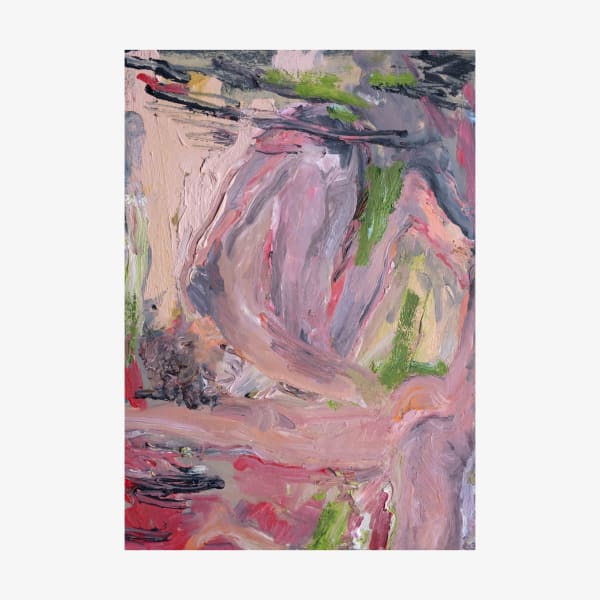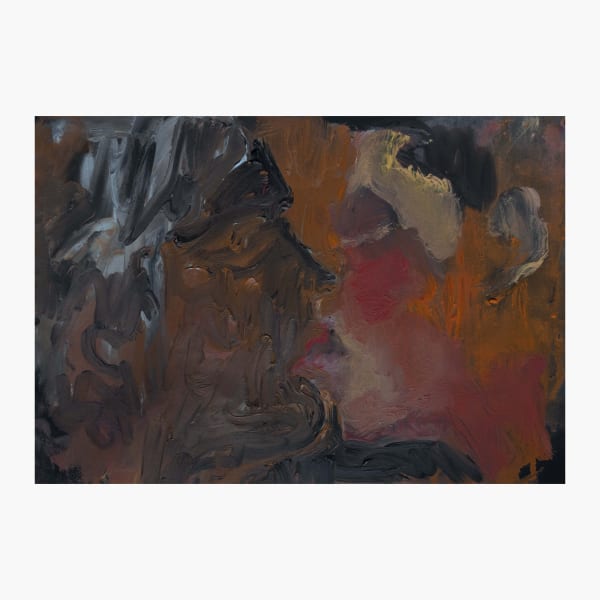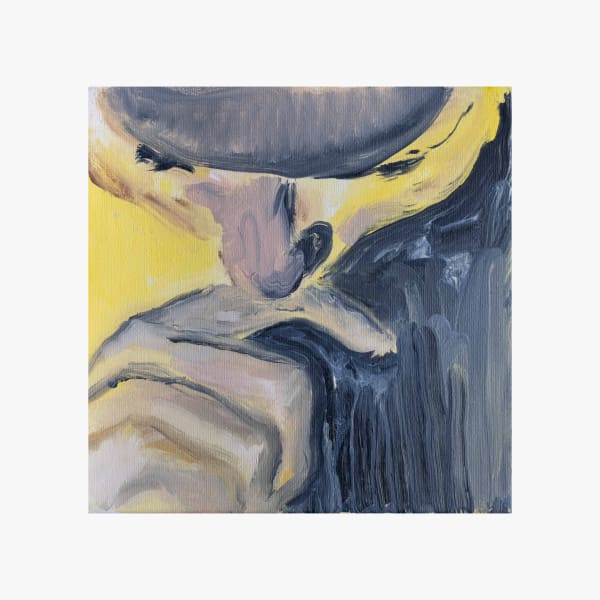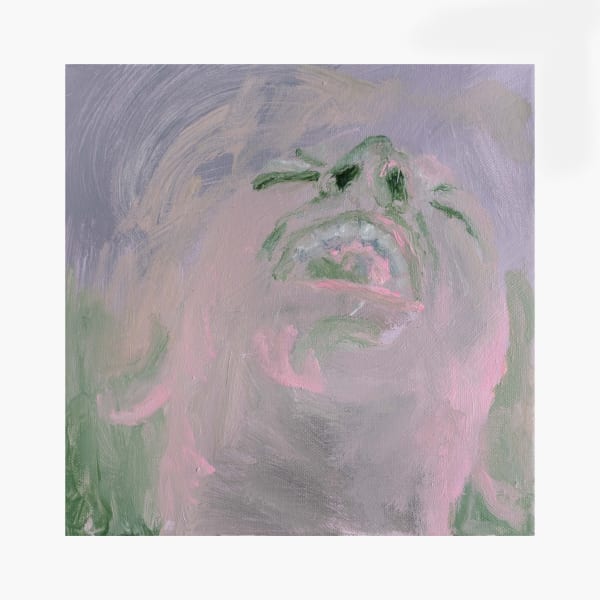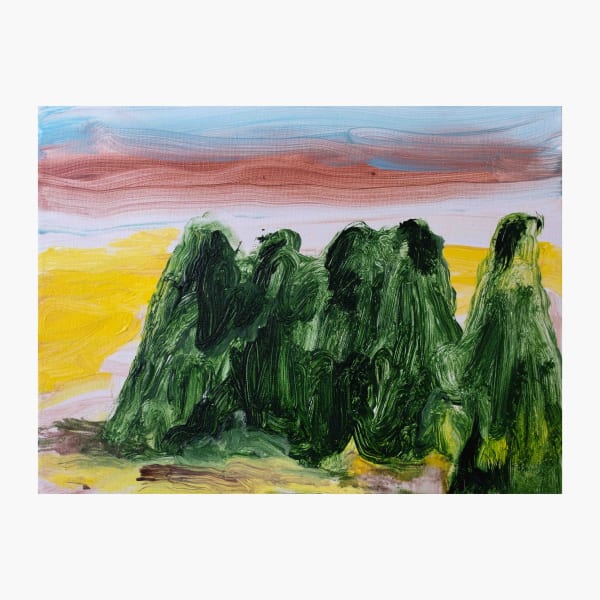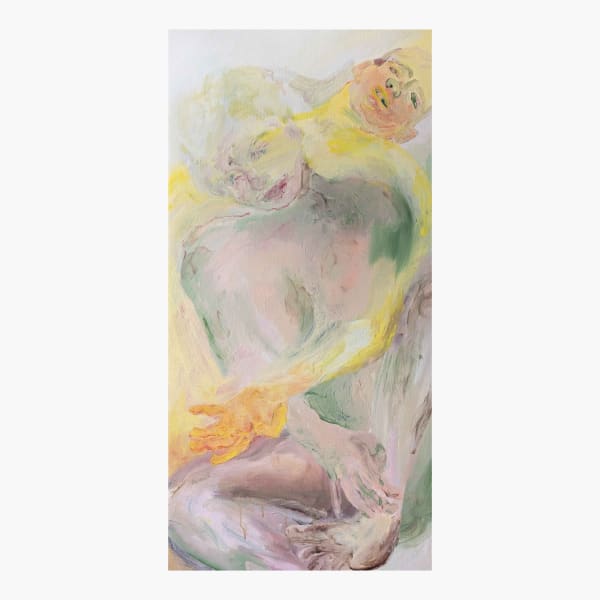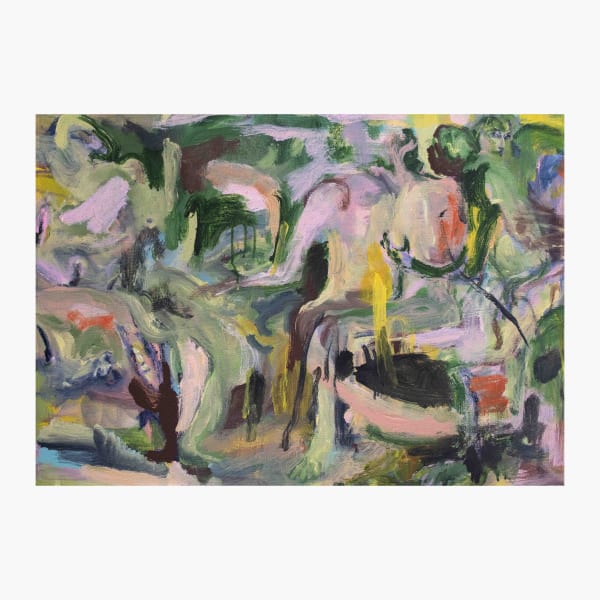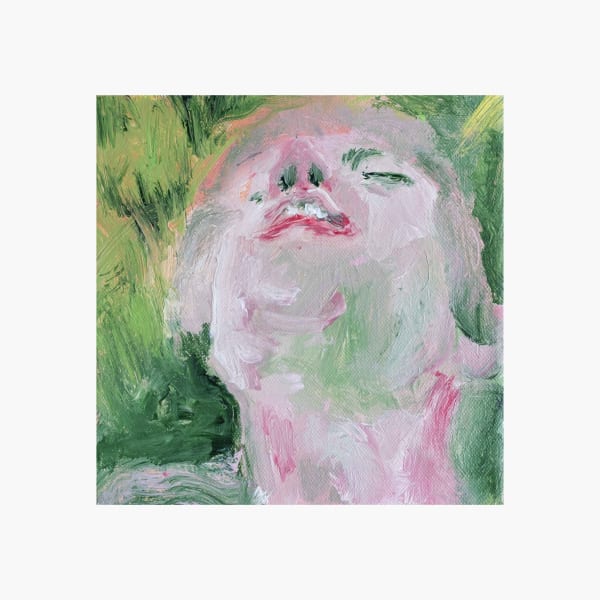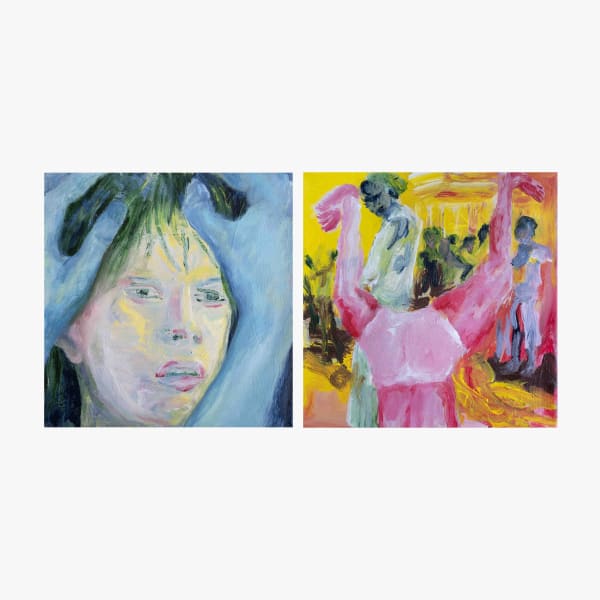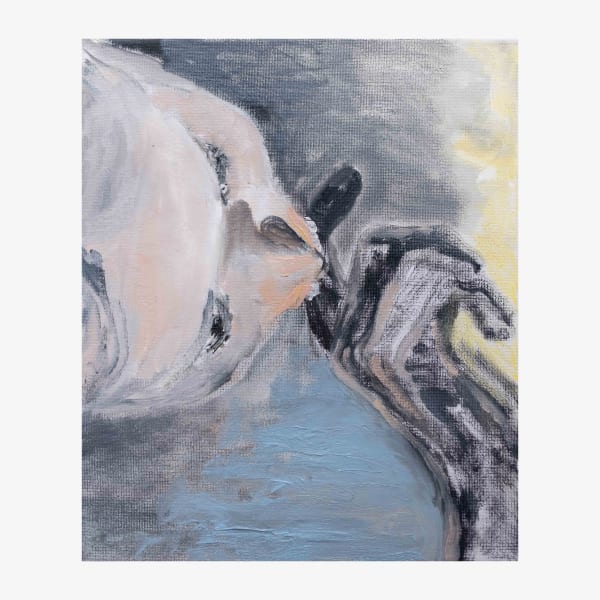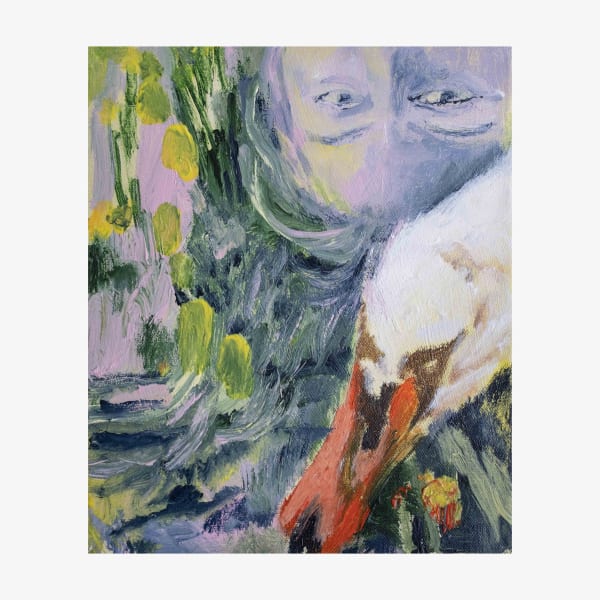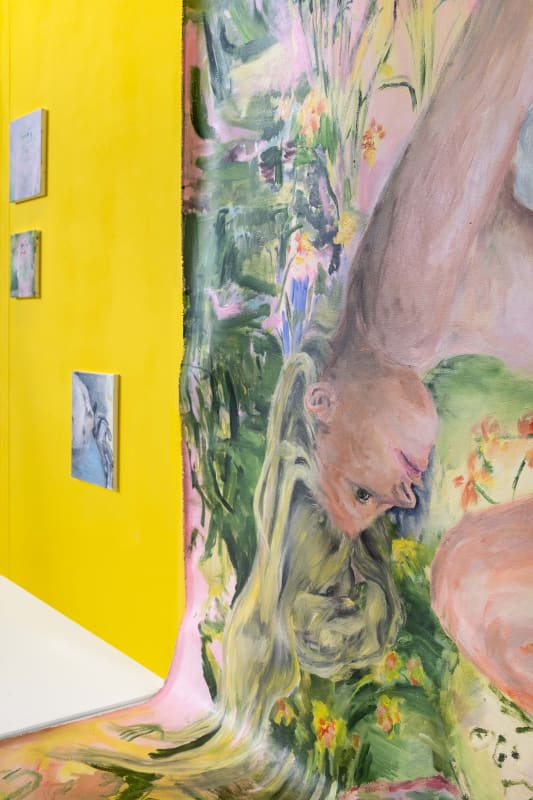In the current project presented in the vitrines of Voshkod gallery, Olya Avstreyh creates an almost theatrical moment — with a huge intensely painted piece as its ecstatic center. We witness a certain scene — a dying swan or a crucifixion, surrounded by bright yellow, building an unsettling impression that forms a unified semantic entity together with a collection of smaller carefully spread canvases. While the emotions portrayed by Avstreyh can be easily followed by the viewer, the stories behind them are complex. Grotesque faces and shapes of bent and ‘broken’ bodies speak of anxiety, rage, pain, and trauma, but also ecstasy and excitement — the feelings she has experienced in the past year.
Text by Kate Savchenko
The latest project of Olya Avstreyh — a Tel Aviv-based artist — takes its title from Jean-Paul Sartre's introduction to Jean Genet's masterpiece “Our Lady of the Flowers”, published in 1943. This semi-autobiographical novel, narrated as a sexual fantasy, depicts the Parisian underworld and revolves around the story of a drag queen named Divine. Although Avstreyh stumbled upon the book while browsing her friend's bookshelf, it is not surprising that Sartre's reflections on Genet have found their way into her practice. Avstreyh shares Genet's explicit approach to representing the body and his fascination with the drama of the complex and ambiguous human nature — precisely the traits of Genet's writing that Sartre focuses on in his text. When asked about the choice of the exhibition title, Avstreyh recalls that the line just felt right to her, as it reflected her immediate emotional state and accurately captured the dramatic nerve of her work.
Olya Avstreyh's practice as a whole — from painting style to the choice of subjects — is arguably driven by impulse and intuition, rather than by a structured narrative, and her paintings appear as accidental snapshots of reality. The characters she depicts look as if they were capturеd in candid moments without an opportunity to strike a pose or turn to their “good” side, making their expressively painted faces and figures look bold, sincere, and vulnerable. While the emotions portrayed by Avstreyh can be easily followed by the viewer, the stories behind them are complex and not simply grasped. The semantic structures of her works are usually based on intricate assemblages of materials and references from a collection of “impressions” that she keeps, as well as her personal immediate experiences. The artist carefully records visual and textual quotations that strike her as uncanny and spark her senses, including film stills, social media screenshots, images of artworks, book quotes, photos she made on her way home, or notes from conversations with friends.
Olya Avstreyh's current project was developed following a similar approach. The visual references behind its imagery include the iconography of a female figure with upraised arms and head thrown back, as seen, for example, in ancient female idols or certain Picasso’s and Goya’s drawings and engravings, as well as Japanese 1970-s illustrations and archival photos that feature grotesquely bent figures. Avstreyh also drew inspiration from 1970s British folk horror movies, Juergen Teller's playful campaigns for Vivienne Westwood, and images of Batsheva dancers. All these materials feature the images of unsettling bodily expressions that Avstreyh adopted as a dramatic form for her project. She used the shapes of bent and “broken” bodies to speak of anxiety, rage, pain, and trauma, but also ecstasy and excitement — the feelings she has experienced in the past year.
This expressive tension of the project is also transmitted through Avstreyh’s signature vivid colours, such as bright yellow, as well as the structure of the exposition. By its character the exhibition at Voskhod Gallery is more of a cohesive installation, rather than a showcase of individual works. Avstreyh’s paintings, carefully arranged in the space, form a unified semantic entity with a large intensely painted piece as its ecstatic center. Exhibited as an unstretched canvas this work resembles a stage scenery that invites the viewer to witness or engage in the drama of Olya Avstreyh’s artistic universe.

